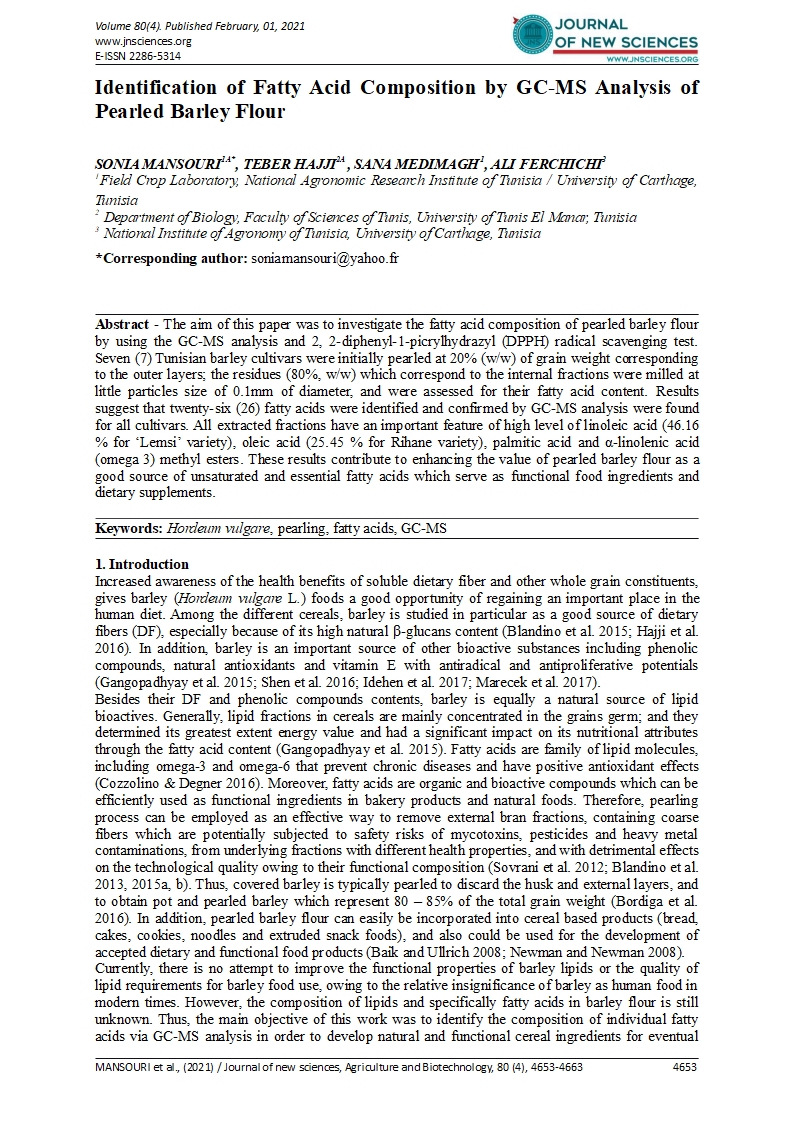

Identification of Fatty Acid Composition by GC-MS Analysis of Pearled Barley Flour
SONIA MANSOURI1
TEBER HAJJI2
SANA MEDIMAGH1
ALI FERCHICHI3
1Field Crop Laboratory, National Agronomic Research Institute of Tunisia / University of Carthage, Tunisia
2 Department of Biology, Faculty of Sciences of Tunis, University of Tunis El Manar, Tunisia
3 National Institute of Agronomy of Tunisia, University of Carthage, Tunisia
Abstract - The aim of this paper was to investigate the fatty acid composition of pearled barley flour by using the GC-MS analysis and 2, 2-diphenyl-1-picrylhydrazyl (DPPH) radical scavenging test. Seven (7) Tunisian barley cultivars were initially pearled at 20% (w/w) of grain weight corresponding to the outer layers; the residues (80%, w/w) which correspond to the internal fractions were milled at little particles size of 0.1mm of diameter, and were assessed for their fatty acid content. Results suggest that twenty-six (26) fatty acids were identified and confirmed by GC-MS analysis were found for all cultivars. All extracted fractions have an important feature of high level of linoleic acid (46.16 % for ‘Lemsi’ variety), oleic acid (25.45 % for Rihane variety), palmitic acid and α-linolenic acid (omega 3) methyl esters. These results contribute to enhancing the value of pearled barley flour as a good source of unsaturated and essential fatty acids which serve as functional food ingredients and dietary supplements.
Keywords: Hordeum vulgare, pearling, fatty acids, GC-MS
